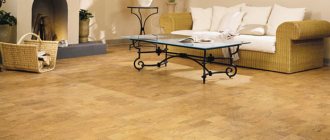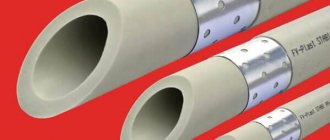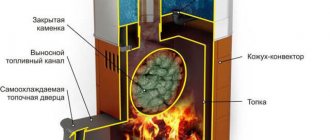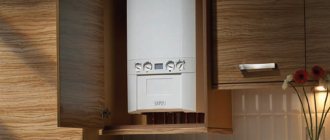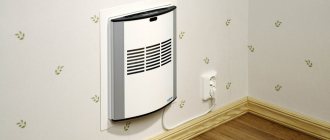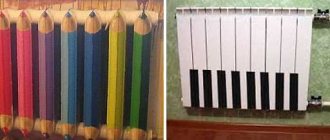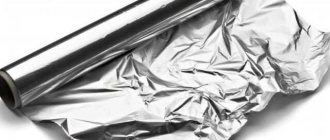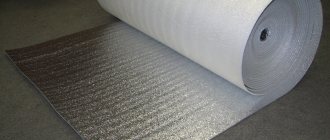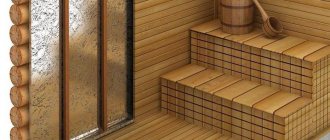Useful tips
Thanks to the properties of foil, its correct use when baking gives any dish a special aroma and juiciness. This happens due to the fact that the products are baked in the oven quite slowly and are well saturated with their own juice. Since they are practically hermetically sealed, and the foil does not allow odors to pass through, the aroma of both the main product and the spices used remains inside.
Using foil is not difficult, you just need to know some of the nuances.
When choosing a material, you should give preference to domestic products, since safety requirements in different countries are different.
Using low-quality products can negatively affect your health. The foil should be strong enough, dense, but thin, since it is important that the juice does not leak out. If the material is too thin, then several layers need to be made. It is important to wrap the foil correctly
If you plan to bake the dish on a baking sheet, then you need to arrange the sheets overlapping so that the edges of the bottom layer protrude beyond the edges of the baking sheet by about 2 centimeters. You need to do the same with the top layer. Then carefully align the edges and fold tightly twice. To properly wrap a large piece of meat or a whole fish, you need to cut 2 fairly long sheets, lay them out crosswise, place the product in the middle and wrap tightly, first in one sheet, then in the other. When wrapping, there should be no holes or holes left, otherwise the juice will leak out and burn, and the dish itself may turn out dry, and the expected effect will not be achieved. It is better to make 2 layers, but do not compress the packaging too tightly. To prevent the foil from burning and nothing sticking to it, you can grease the inner surface with vegetable oil. Not all foods can be baked in foil. This is contraindicated for cereals and grains, green and soft vegetables, and fruits. This method is not very suitable for beef - you can just get a boiled piece of meat. But veal and especially pork are perfectly baked. It is better to cook wild meat according to special recipes. It is better to take meat for baking in one large piece weighing at least a kilogram, only in this case it will be juicy and tender. With less weight it may turn out to be dry. Any fish can be baked. It is advisable to cut off the fins and tail - they can tear the foil. If you want to bake the whole fish, then you need to wrap it in several layers, but do not pack it too tightly. When roasting chicken, it's a good idea to first wrap the ends of the legs and wings in pieces of foil, shiny side out, to prevent them from charring, and then wrap the whole chicken. Vegetables for baking (potatoes, peppers) are wrapped separately. Vegetable stew is prepared in a heat-resistant container, which is covered with a “lid” of foil. The oven must first be preheated well for half an hour. For vegetables, the temperature should be at least 100 degrees, for meat and fish - at least 200. During the cooking process, it is better not to open the oven again, as it cools down quickly. To ensure that the dish is covered with a delicious crispy crust, two methods are used. You can make holes in the top of the package. This must be done very carefully to prevent juice from leaking out. Or you can cut the foil on top 10-15 minutes before the end of cooking, move the edges apart and put it back in the oven to brown.
Possible problems
Aluminum food foil is recognized as a safe material for use in the kitchen, but scientists have differing opinions on this issue. When freezing and storing food, foil is absolutely safe, but some experts consider its frequent use for baking to be harmful to the body.
When baking, when the material is heated to a high temperature, it begins to collapse and its microparticles, invisible to the eye, can remain on food and enter the human body. This process is also facilitated by the acid formed when using certain seasonings or, for example, lemon.
But this danger can be minimized if you follow simple rules.
- Do not cover or wrap the food very tightly, and the dish will turn out more juicy and tasty.
- Place products so that they come into contact primarily with the glossy rather than the matte side of the material. This is especially true for dishes that use lemon, vinegar marinade and a large amount of seasonings.
- Do not use this cooking method as an everyday method. The dishes actually turn out very tasty, but you shouldn’t lose your sense of proportion.
Properties and features of the material
Regular foil is made from different metals - tin, steel, gold or silver. They are rolled through large shafts, the gap on which gradually decreases. In this way, layers of metal “paper” of the required size are obtained, which are then rolled into rolls.
Foil, suitable for preparing or storing food (food), is made of aluminum . It can most often be found in the store. This material is considered the safest; it can come into contact with food.
In addition, it has the following properties:
- Doesn't melt;
- Does not cause allergies;
- Able to retain heat.
How to lay foil correctly
The properties of shiny and matte surfaces lie in their relationship to temperature conditions. A matte surface heats up faster because it attracts heat better, while a shiny surface retains it longer.
If you place foil on a baking sheet with the shiny surface facing up, you can speed up the cooking process somewhat. In addition, food does not burn on the shiny side. But it’s better to cover the dish with the matte side up - it will absorb heat, which will also reduce the cooking time. In addition, this method allows you to better preserve the aroma of the dish.
Experienced housewives know that in this way you can cook not only meat or fish, but also use the properties of the material to improve the quality of baked goods. If you place the dough on the glossy surface of the foil, the products will not burn on the bottom, will not stick, will rise faster and will be baked better.
If the baked goods begin to darken or dry on top, but the inside has not yet had time to bake, then the foil can be placed on top with the shiny side down, and then removed a few minutes before the end of cooking. In the same way, you can put foil inside a baking dish or make muffin tins.
Portioned dishes can simply be wrapped in foil, created into kind of “bags” from it, then placed on a wire rack or baking sheet and also baked in the oven. This allows you to prepare a more juicy and flavorful dish than when boiling or frying. In addition, the nutritional value of the products is preserved and the calorie content does not increase, because it is not necessary to use oil.
This method is rational, since a separate portion, already wrapped in foil, is convenient to take on a short trip, to work or on a picnic. At the same time, there is generally no fundamental difference in which side to wrap the foil inward, but it is better to still use the same principle - the glossy side should be on the inside, since it also has antibacterial properties, which contributes to better preservation of the prepared products.
How to wrap meat in foil before baking, step-by-step instructions with photos:
To work, we will need a prepared piece of pork and foil.
Fold a sheet of foil in half, with the matte side facing in. The length of the folded piece should be 2.5 times the length of the piece of meat. Place the prepared meat on one half of a piece of foil.
Cover the top without tension with the other half of the foil and fold the joined edges twice, forming a seam.
Wrap the double seam on both sides in the same way. We'll get a package.
Carefully press the foil around the meat.
When baking, a correctly formed bag will inflate and straighten, but the seal will not be broken and not a single drop of juice should leak out of the foil during baking.
Humanity regularly comes up with new devices to easily solve everyday problems. There are countless such technologies in the field of cooking, and food foil is one of them. With the advent of this indispensable practical product, the process of baking food has turned into pure pleasure.
Due to its properties - flexibility and heat resistance - aluminum foil has become a real helper in the kitchen. Every housewife knows that you can’t do without this shiny, rolled into thin sheets of metal when preparing dishes in the oven - just cover a mold or baking sheet, and the food will never burn. However, despite all the apparent simplicity, the question arises: how to correctly place the foil, matte or glossy side down?
Fish baked in foil
We will need:
- any fish of your choice: perch, mackerel, trout,
- crucian carp, carp, etc.;
- lemon 1 pc.;
- any vegetable oil: sunflower, olive 1 tbsp. l.;
- garlic 2-3 cloves or dried equivalent - 1 tsp;
- allspice 5 peas;
- salt to taste;
- greens at your discretion: parsley, dill, basil, mint.
Let's start cooking:
Clean the fish, wash and dry with a paper towel. Place on foil and coat both sides with oil and salt. Rub with garlic. In the belly we put slices of half a lemon, allspice, mint or basil. Place the remaining lemon slices and dill on the fish itself and carefully form an envelope out of foil or simply wrap it securely. Place in the oven preheated to 180 degrees for 15-20 minutes.
Can be served with any side dish. The fish turns out juicy, aromatic and very tasty. Before serving, sprinkle with lemon juice if you want some piquancy.
Top foil cover
Cooking vegetables and baked goods does not always require completely wrapping the dish in aluminum film. It is enough to cover a large number of prepared products on top. To do this, vegetables are placed in a heat-resistant container and covered tightly with metal paper. This technique is good for casseroles or vegetable stews. These measures allow you to preserve vitamins and nutrients that are destroyed during normal cooking.
Flour products prepared at home need protection from overheating. To do this, place a sheet of foil on top of the baking sheet. The matte side comes into contact with the baked goods, while the glossy side reflects the high temperature. It is better to perform this procedure shortly before the end of baking the dish in order to see how the cooking process is progressing.
Using foil in cooking
In dishes cooked in foil, more microelements useful for the body are retained, because the food is cooked in its own juice, and heat treatment occurs evenly. There is no need to pre-marinate a piece of meat, a whole chicken or fish for many hours. Usually the housewife rubs the food with spices and, wrapping it in foil, puts it in the oven.
Foil allows you to reduce cooking time; the meat will be baked at a temperature of two hundred degrees, within half an hour. Vegetables and fish can be served in just twenty minutes; the oven only heats up to one hundred degrees, which also saves electricity.
Until the microwave was invented, many people heated food in the oven, wrapped in foil, which was quick and safe. The dish will remain warm for a long time if you cover it with foil and a towel. Baked and cooled cuts of meat will stay fresh longer if they are wrapped in foil and left at room temperature.
A good housewife knows that in order for baked goods to bake evenly, they first cover it with foil. A few minutes before the end of the cooking time, remove so that the pie can get a golden brown crust.
The secret of food foil
The secret of foil is simple. There is no difference between the parties. When manufacturing the sheet, only safe aluminum alloy is used. When heated, the foil releases harmful substances in such minute quantities that they have no chance of harming the body.
To obtain a tasty and juicy baked dish, it is necessary to ensure tightness. For fish, chicken or meat, it is best to wrap them so that the matte side is on the outside. This way the product will not burn and will be well baked.
AlinaAuthor of the article
Did you like the article?
Share with your friends:
Comments (1)
- Tariel Talybyan March 3, 2021 at 10:29 pm
Stop talking like lying dude parrots!
Answer
Does the quality of food depend on what is on the baking sheet?
The properties of the foil in question do not change the state of the food being prepared and its taste, no matter how you turn the sheet. Despite the talk about the different reflective abilities of glossy and matte surfaces, they actually have almost the same indicators (88% and 80%, respectively). And this clearly cannot significantly change their properties.
This means which side you place the foil on the baking sheet is not of fundamental importance! The quality and taste of food will depend only on the skill of the cook. True, dishes prepared with vinegar or that have a sour taste should not be kept in foil for a long time. In addition, you cannot cook in it in the microwave: everything will remain raw.
But this aluminum sheet (pictured) has a unique ability to withstand high temperatures (600 ° C). You can safely use it to either fish directly in the coals or on the barbecue.
Useful tips
Aluminum sheets can be extremely useful in everyday life, and not only for preparing food, but also for storing it. Here are some tips on how you can use them:
- If you wrap the finished dish in foil, it will retain heat longer (about 2-3 hours).
- If you need to keep cold, the material can also be used; the properties of the sides for these purposes will not differ.
- Aluminum is almost impermeable and does not absorb odor, so if you need to transport or store something that has a specific aroma, wrap the product tightly in foil.
- To prolong the freshness of your greens, wrap them in “silver paper.” This way it will last many times longer.
- Foil can be used instead of a lid when storing dishes in baking dishes and other dishes. Cut a piece of the required diameter and secure its edges to the sides.
- Never use the material in microwave ovens; not only will you not cook the dish, but you may also damage the device. Remember, electromagnetic waves in microwaves are reflected from any metal surface, no matter whether they are glossy or matte.
Read also: Why there is no sleep with a hangover
Now you know how to properly place foil on a baking sheet. You can cook in the way that is most convenient, because every woman is the master of her own kitchen. Remember that no matter which side you put the foil on, you will be right.
Attention! You can take part in our competition!
Send a video about how you solved your problem (washed a stain, cleaned a frying pan, or coped with some other household task) and get 400 rubles!
What does the shiny surface of foil reflect?
The explanation about reflection looks plausible: from our school physics course we remember this property of shiny surfaces. But what do they reflect when cooking in the oven?
There are three methods of heat transfer: conduction, convection and thermal radiation. When cooking in the oven, the last two are crucial, since neither the baking sheet nor the foil are in direct contact with the heating elements.
Convection
In the oven, heat is transferred to the product from the heating elements due to the movement of air. Convection is present in any oven, and not just in the one that has this word in its name. When we talk about a convection oven, we mean a fan that moves heated air faster.
A shiny (or matte) surface does not affect convection. The foil will heat up regardless of which side it comes into contact with the product and transfer this heat.
What will matter more in this case is how tightly the foil is wrapped around the contents. If air remains between the product and the aluminum sheet, it can act as an insulating barrier and slow down heat transfer.
Thermal radiation
Convection is of greatest importance when cooking in the oven, but some of the heat transfer is due to radiation. It is emitted by any object with a temperature above absolute zero (−273.15 °C), that is, all elements of the oven and all its contents.
For infrared radiation, the side of the foil will matter: the shiny surface reflects the rays, the matte surface catches them. But this difference in heat transfer is important only for highly sensitive devices. The side of the foil will have little effect on the speed of cooking dinner.
Why does foil have different sides?
The different surfaces of the foil are not made on purpose, this is a feature of the technological process. Aluminum is rolled into thin sheets of foil using heavy metal rollers, like dough with a rolling pin. One side comes into contact with rollers, which polish it to a shine. The other remains matte.
Which side of the foil should be in contact with the food?
Experts believe that in this matter you can completely rely on your taste, since there are no functional differences. Robert Wolke writes about this in his book “What Einstein Told His Cook.” Reynold's Kitchen experts came to a similar conclusion.
The question of which side to use foil is fundamental only for aluminum sheets with a non-stick coating. In this case, the manufacturer recommends placing products on the matte side marked non-stick.
Post Views: 2,604
How are the surfaces of the two sides different?
Foil has two different surfaces - matte and shiny, so it is quite natural to ask why this is done and which side to use. The answer to the first question lies in the foil manufacturing technology. For this, different metals are used: steel, tin, silver, gold. But such foil cannot be used for cooking.
Food foil is made of aluminum. It is safe in contact with food, does not melt at high temperatures, heats up easily, retains heat for a long time, and does not cause allergies.
Therefore, it is very important to pay attention to the labeling and use only food foil for cooking.
During production, metal is rolled through large shafts, gradually reducing the gap between them. The result is thin sheets that are rolled into rolls. When rolling through the machine, two sheets are launched at once, and the sides adjacent to each other are rough. The outer sides that came into contact with the roller become shiny.
The properties of both sides are almost the same, but there are still some differences. If you know this difference and use it correctly, you can take advantage of the advantages of both sides.
Using special sun protection film
A film specially designed for sun protection is a slightly more expensive option, but more reliable. It relieves the apartment owner from all the above-mentioned disadvantages of using ordinary food foil.
Advantages of solar control film:
- strength - the film is dense and elastic, and not fragile like foil;
- a dimensional grid suitable for use on windows (length – 3 m, width – 0.6-1 m);
- affordable price - on average, a roll of film costs 100 rubles;
- good appearance if installed carefully;
- transparency - sunlight will sufficiently illuminate the room without heating it.
By applying solar control film to the window, you will get slightly tinted glass, which will reflect excess radiation from the outside.
Please note: during the day, glass coated with film perfectly protects windows from the eyes of passers-by, as they create a mirror reflection. However, at night when the light is on, the room will be visible very well, so do not forget about using curtains
There are two types of such window film - glass-adhesive and curtain film. Let's look at the features of using both materials to understand which one is better suited in a particular case.
Adhesive film for sun protection
This version of the film is glued directly to the glass. With its help, the effect of tinting the surface is created. The advantage of this method is that the material is durable and can be used for several seasons in a row (remember that UV rays enter the room not only in summer).
Instructions for gluing this film:
It is necessary to thoroughly wash the window from dirt, remove dust and small debris from it. If this is not done, any particle will be very noticeable from under the film; Then the area of the glass is measured, a part of the material is cut off according to the measurements with a margin of 5 mm on each side; Using a spray bottle with soapy water, generously wet the surface of the glass. The more moisture, the easier it will be to adjust the position of the cut on the window; The protective layer is removed from the material, then its reflective side is also sprayed with a solution; The film is applied to the surface with gentle movements (it is better to do this with an assistant, using four hands), smoothed and leveled
Important – the film is glued with the reflective side facing out!
Next, you need to remove moisture from under the material. This works best with a rubber spatula, but if you don’t have one at hand, any similar object with a soft cloth draped over it will do.
At this stage, it is important not to damage the film with sharp objects (that is, it is not recommended to expel water with a regular metal spatula, flat spatula or similar objects); The last step is to cut off the excess film along the edges, left to compensate for possible gaps and distortions, using a cutter or a sharp stationery knife.
If the work is done correctly and carefully, there should be no folds, air bubbles, or scratches on the surface of the film.
Poor-quality window film installation option
In order to remove such film from the window, you will need to act no less carefully. If the material was originally of high quality, it will come off easily after preheating (for example, with a regular hairdryer)
The edge of the film is carefully lifted with a spatula or a metal ruler, then pulled back and gradually removed from the glass.
There are also self-adhesive film options. Often they are made not just in the form of tinting, but with beautiful drawings or patterns (like stained glass or in a certain theme). It is better to remove any remaining adhesive after removing such material after it has cooled using mild detergents.
Window curtain film
The curtain film is not attached to the glass itself, but to the top of the frame. This allows you not only to protect yourself from the sun, but also to freely open and close the shutters for ventilation, adjust the level of illumination in the room - the lower part of such a curtain can be easily moved aside. The material is attached using a self-adhesive strip at the top of the product.
The installation process consists of:
- When washing the window frame, its upper part should also be free of specks and dirt;
- Removing the protective layer from the self-adhesive strip;
- Carefully and evenly glue the curtain to the top of the frame.
Using ordinary garters, you can roll up and unfold the curtain film according to the principle of roller blinds.
This method of protection from daylight will not only help maintain a comfortable temperature in the room, eliminate the possibility of furniture and decoration fading, but also eliminate the hassle of wiping the material off the glass. In addition, such a curtain can only be lowered at the time of day when the sun shines directly through the window.
Which side should you put the foil on when baking?
When cooking a dish in the oven, convection is crucial - flow heat exchange or, in other words, the circulation of hot air inside the appliance
In this case, it is critical to wrap the dish tightly and correctly place it, but the reflectivity of the foil makes virtually no difference either in terms of speed or quality of cooking
The above does not apply to special non-stick foil - in this case, the desired side usually has a special “non-stick” mark.
With the advent of food foil on sale, preparing even familiar dishes has become much more interesting. All kinds of dishes baked in it always turn out tender, juicy, aromatic and very appetizing.
Surface matters
Using food foil in the cooking process is easy. It is enough to carefully wrap meat or fish, vegetables or fruits in it and place it in the oven for a specified time. The result will always be good: the result will be a tasty dish, since the products slowly simmer in their own juice, baking evenly, and direct high-temperature exposure cannot spoil its taste, and all the beneficial substances will be preserved.
But there is one small but significant nuance: it turns out that you need to know which side to put the foil on the baking sheet.
The two sides of the foil, if you look closely, are different from each other. This is what production technology requires, and here’s why:
- the side that has a matte surface with a slightly noticeable roughness absorbs heat perfectly, and with the help of this effect, dishes are cooked much faster;
- the other side is different in that it has a more shiny mirror surface, which is more capable of reflecting heat rays.
Therefore, if a dilemma arises before baking food - how to properly place foil on a baking sheet, then you need to remember: the matte side should always be on the outside so that heat is absorbed. The glossy part is inside, it is on it that various ingredients are laid, and the mirror surface will retain evenly distributed heat.
If you need to use food foil in the form of a thermos, then, again, lay out the foil with the matte part down, and place the food or cooked dish on the open mirror surface and wrap it. All contents will remain warm or cold for a long time, and will remain fresh with their special taste.
It is permissible to place the components on a matte surface so that the glossy surface remains on the outside. This is done if the products are at risk of overheating and its intensity needs to be reduced. In this situation, the protective properties of the glossy surface can protect the food from overdrying or burning.
Scientists' conclusions
Scientists, of course, decided to check how much the technology for preparing various dishes would be disrupted if, unknowingly, the matte part of the foil ended up inside during cooking in the oven.
Fortunately, it turned out that this will not cause harm to the human body - that is why the foil itself is called food grade, is classified as an environmentally friendly harmless product, and does not emit harmful substances from any side. The difference is only in the reflective abilities of the surfaces, but the difference in them is quite insignificant - up to 15 percent. And if you bake large pieces of meat or fish, then the final quality of the food will not be reflected in the value of the matte or mirror side.
True, if you cook food without adding oil, then it does not particularly stick to a glossy surface, but it can stick to a matte surface. Therefore, when choosing which surface to place dry or low-fat products on, preference should be given to a mirror surface, and the place of the matte side will be on the baking sheet.
Cook faster or slower
You may be disappointed, but the story that the glossy side of foil cooks food quickly and the matte surface is good for slow cooking is actually a myth that has already been debunked by scientists several times. But what really matters is the degree of adhesion of the foil to the product and the density of the “envelope”. The less air between the foil and the packaged product, the faster it will cook, and if you want to simmer the dish in its own juice, then leave a little space inside.
Use for oven cooking
Using foil is extremely easy. Even a young and inexperienced housewife can handle it without difficulty. The interesting thing is that you can always experiment and choose the most original and delicious recipes. You can cook anything in it, but there are some recommendations for its use.
Do not cook in foil:
This is not to say that cooking these products using foil is prohibited, it just won’t be tasty. As for cereals, it is indeed forbidden to cook them in this way.
The main condition for use is that the packaging is sealed
The way the product is packaged is extremely important, so to preserve the juices, you need to press the packaging material well on all sides to avoid even the smallest holes. If we talk about pies, they should also be sealed very tightly, as this gives both tenderness and a unique taste to the dish.
If the foil is quite thin, then it is better to pack the product in several layers before baking. This is especially true when baking meat and fish. Wild animal meat should not be baked in foil, since preparing such a dish usually takes a lot of time. Here it is better to refrain from experiments.
Which side to bake
We have already figured out above that there will not be much difference. Moreover, this will not cause any harm to food. Many housewives do not even notice which side they place the product on. But still, there are a few small recommendations on which side to place the foil on the baking sheet:
- If the baked product has a marinade of vinegar or lemon juice, then it is best to pack it with the matte side facing out. As has already become clear, it can affect the taste of a dish upon contact with an acidic environment. This is especially true when using high temperatures;
- if the foil is placed on a baking sheet, then the shiny side should be on top, so there is a much greater chance that the food will not burn. If the dish is covered with a sheet on top, then the matte side should be on top;
- It is better to cover the pie with the shiny side facing in, but this is not critical.
First of all, you need to choose high-quality material: thin, but dense. It should hold its shape well and not be damaged by one touch. There is no special scheme for wrapping products
The main thing you need to pay attention to is tightness. Violation of this nuance will lead to burning and leakage of juice.
The finished dish will be dry and tasteless.
To bake whole fish, it is better to use several layers of packaging material, as the fins can damage it. This also applies to chicken, which is cooked as a whole carcass.
It is very important to know that foil is not intended for storing food, so immediately after cooking, when serving, it should be completely removed. Everyone also knows that heating foods wrapped in shiny sheets in the microwave is strictly prohibited.
Some housewives often ask whether it is necessary to pierce holes in the foil when baking. It depends on what result is required. A product hermetically sealed in foil naturally cannot get a crispy and golden crust; it takes longer to stew. If you pierce a couple of holes in the upper part, then excess steam will escape through them, and an appetizing crust will form, but the dish may lose its juiciness. Therefore, the choice is up to the hostess.
In any case, the dish will turn out not only very tasty and aromatic, but also healthy, which is important. Which side of the foil should be on the inside and which on the outside, matte or shiny? This is one of those questions that you can live in peace without thinking about without an answer, but if you have asked yourself one, you must find out the truth
Which side of the foil should be on the inside and which on the outside, matte or shiny? This is one of those questions that you can live in peace without thinking about without an answer, but if you have asked yourself one, you must find out the truth.
Most chefs, cookbook authors and housewives are on the dark side of the issue, that is, they wrap the food with the shiny side inward and leave the matte side to heat under the heat of the oven. Household logic explains this quite simply and quite reasonably - matte and textured ones absorb heat much better than glossy and smooth ones. However, in the case of cooking in the oven, everything is not so simple.
Why do you need baking foil and how to use baking foil in the oven?
food is wrapped in foil pouches before baking in the oven
Food foil was originally intended for baking foods in the oven and storing them for short-term storage.
Thanks to the good conductivity of infrared rays and the accumulation of heat inside, it helps housewives create delicious masterpieces in the kitchen.
Important - ensure the tightness of the product you plan to cook in foil. That is, wrap food with it so that the juice is collected and stored inside.
